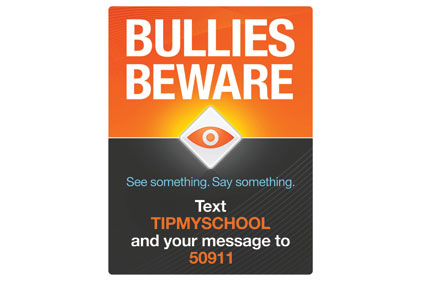I walked every day with a best friend to Wilson grammar school. And, if memory serves me, the most dangerous things in my school life back then were the too-warm cartons of milk and Miss Hildenbrandt, armed with her fiendish ruler.
While writing this column, school bells are ringing again.
But times they are a changin’. And school administrators across the country must once again focus on safety issues ranging from kids carrying guns in their book bags to live and cyber bullying and everything in between.
And, unlike college and university campuses which more often must be open to students, instructors, visitors and neighbors 24/7, K-12 schools are locked down tighter these days but not necessarily better protected. Emerging state laws, school districts, school resource officers and first responders all are working together, again this year, to anticipate trouble and reduce threats.
New State Laws
For instance, just weeks ago, Delaware Governor Jack Markell signed Senate Bill 233 into law in front of students at McKean High School. Referred to as the Omnibus School Safety Act (OSSA), the law requires the state’s department of safety and homeland security to coordinate safety plans for all schools. Markell admitted that the quality of safety plans varies. “Schools across the state have school safety plans; some of them are really good, and some of them are really bad. And that is the reality.”
So, he says, “We begin the process of bringing all 219 public schools in our state operating under one common safety protocol, making Delaware the first state in the country to do so.” The OSSA requires schools and districts to create a school safety team to develop individualized plans. Schools must also work with local first responders and conduct at least one critical incident exercise per year, and a more informal “tabletop” simulation exercise once every two years.
Some school districts take action to improve security after an incident.
Baltimore County school administrators in Maryland are looking into new anti-violence measures such as hand-held metal detectors, increased police presence and a new security office after a teacher wrestled a gun from an eighth-grader just a couple of weeks after a shooting at a nearby high school.
Guns from Home
Not surprisingly, officials called on parents and guardians to do a better job of securing weapons at home after a 13-year-old boy stood at the end of his first-period class at Stemmers Run Middle School in Essex and pulled a small, loaded handgun. The eighth-grader threatened his teacher, other students in the classroom and himself before his teacher forced him to drop the weapon as other students fled the room.
The kid’s grandfather has been charged with failing to secure the .25-caliber semiautomatic handgun. This incident happened about two weeks after a 17-year-old was shot by a fellow student in the cafeteria of Perry Hall High School on the first day of school.
So school resource officers will soon be issued hand-held wands for detecting metal objects when suspicions are raised or potentially dangerous situations arise. As other school districts have discovered in the past, moving students through metal detectors when entering a facility is not very practical, since the children enter mostly at once and not at staggered times. Superintendent Dallas Dance promises that an entirely revised crisis plan for the system will also be “rolled out very soon.”
Across the country, schools are improving their emergency messaging systems. Next month, by the way, Securitymagazine will update enterprise security leaders on mass notification systems and procedures.
School security officials also are addressing bullying these days.
School bullying statistics in the United States show that about one in four kids are bullied on a regular basis. Between cyber bullying and bullying at school, there is a significant problem. Teens in the sixth through 10th grade are the most likely to be involved in activities related to bullying.
There are unique anti-bullying programs.
For example, the Refugio Independent School District in Refugio, Texas, has deployed a new anonymous tip system that is designed to deter bullying before it even happens. Much like surveillance cameras deter crime, the district has placed highly visible posters that warn would-be bullies of a pervasive yet discreet tipping system. This system, called uTip — The Bully Buster, empowers fellow students to anonymously submit on-the-spot tips from their cell phones. The uTip program is provided free of charge for the first year by e2Campus, a firm which specializes in school safety communications.




